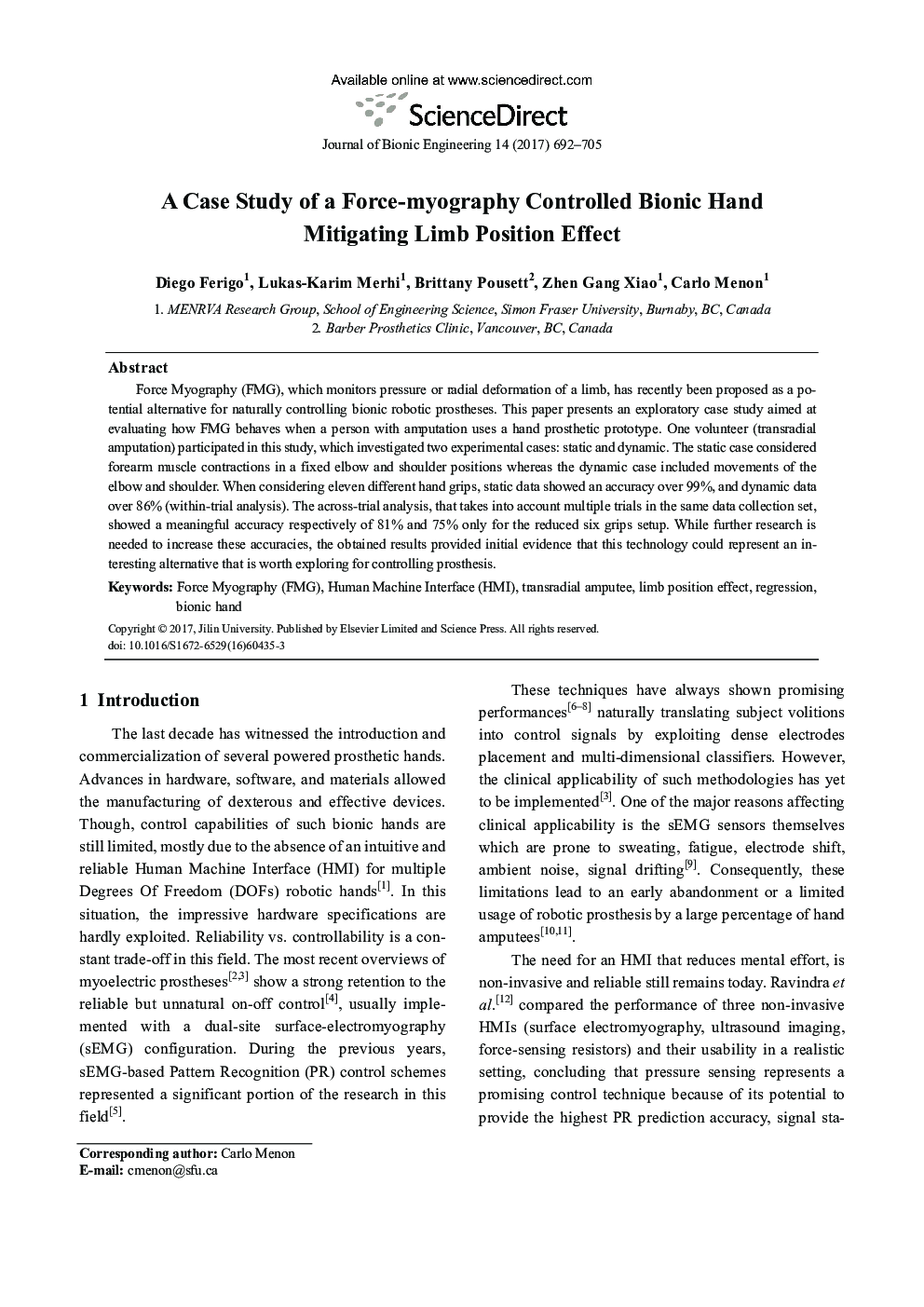| Article ID | Journal | Published Year | Pages | File Type |
|---|---|---|---|---|
| 7216453 | Journal of Bionic Engineering | 2017 | 15 Pages |
Abstract
Force Myography (FMG), which monitors pressure or radial deformation of a limb, has recently been proposed as a potential alternative for naturally controlling bionic robotic prostheses. This paper presents an exploratory case study aimed at evaluating how FMG behaves when a person with amputation uses a hand prosthetic prototype. One volunteer (transradial amputation) participated in this study, which investigated two experimental cases: static and dynamic. The static case considered forearm muscle contractions in a fixed elbow and shoulder positions whereas the dynamic case included movements of the elbow and shoulder. When considering eleven different hand grips, static data showed an accuracy over 99%, and dynamic data over 86% (within-trial analysis). The across-trial analysis, that takes into account multiple trials in the same data collection set, showed a meaningful accuracy respectively of 81% and 75% only for the reduced six grips setup. While further research is needed to increase these accuracies, the obtained results provided initial evidence that this technology could represent an interesting alternative that is worth exploring for controlling prosthesis.
Related Topics
Physical Sciences and Engineering
Engineering
Biomedical Engineering
Authors
Diego Ferigo, Lukas-Karim Merhi, Brittany Pousett, Zhen Gang Xiao, Carlo Menon,
